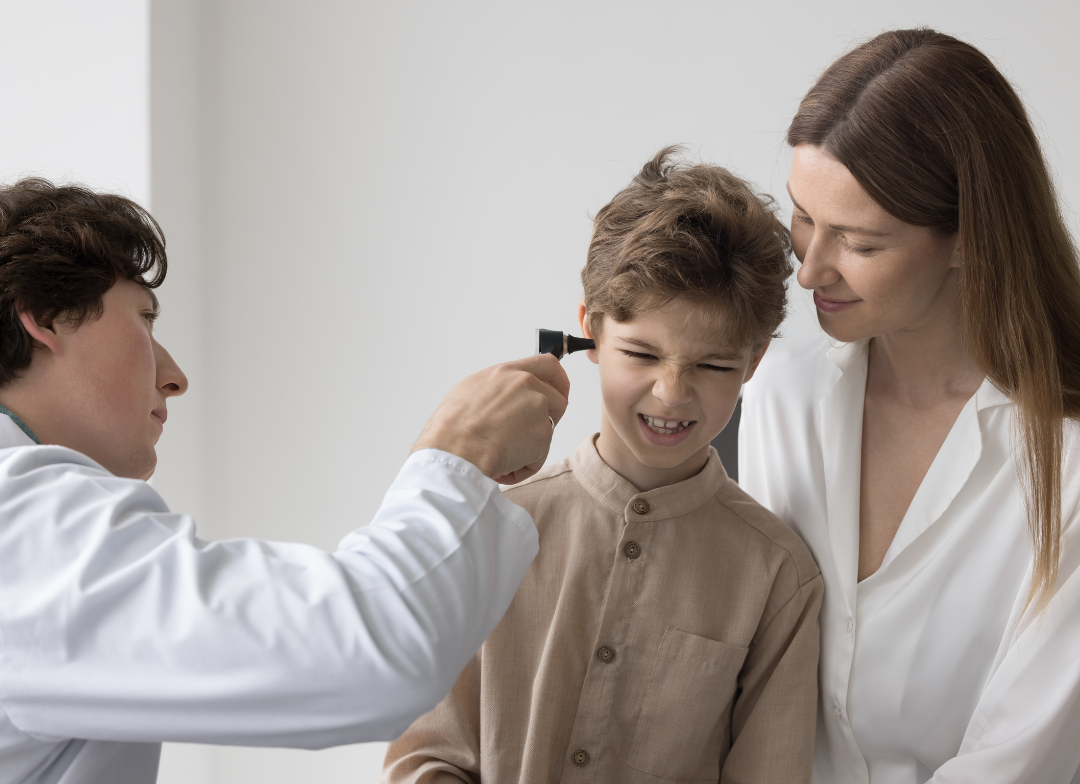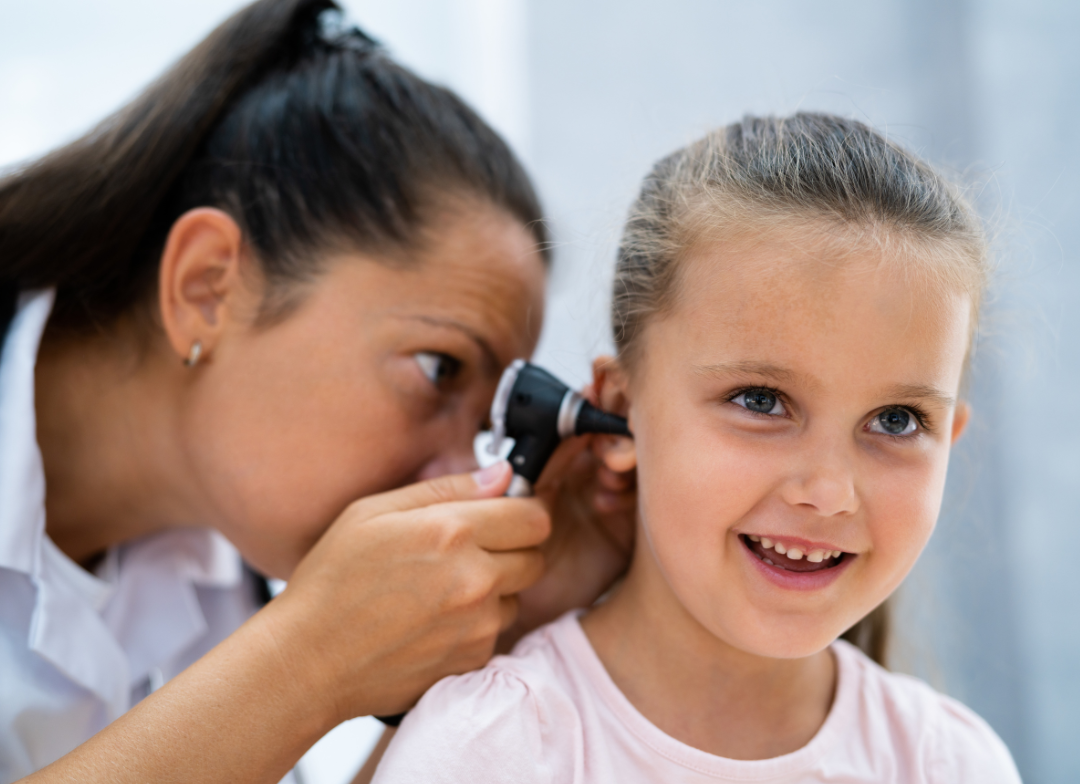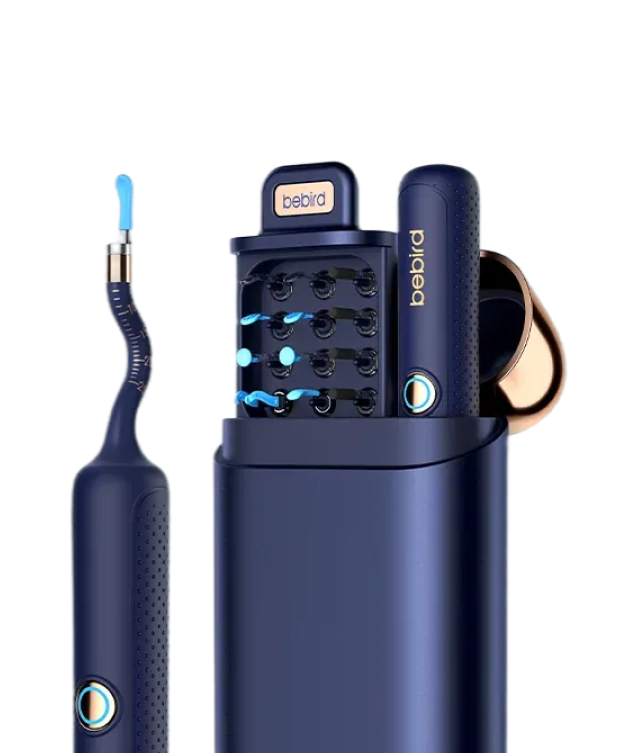An ear infection is a typical health condition that occurs in both adults and children. Some are mild and self-limiting, whereas others may cause discomfort, pain, and long-term complications progressing unremedied.
Have you ever had ear pain, heard a fluid behind your ear, or had any hearing issues? Many people might have asked themselves the question: How do you know if you have an ear infection? This guide discusses symptoms, causes, remedies, and prevention of ear infections, and how some new devices, such as the Bebird ear-cleaning machine, will enable you to take care of your ear health yourself.
What Is an Ear Infection?
An acute ear infection is an illness that develops when the ear is infected by bacteria, viruses, and fungi, causing inflammation and pain along with the development of fluid inside the ear cavity.
Outer Ear (Otitis Externa)
This is the canal of the ear or the eardrum itself. The infection is commonly referred to as swimmer's ear, as it is commonly developed due to the presence of water stagnation in the ear canal[1]. It is typically associated with itching, redness, and pain, which becomes worse when the ear is touched.
Middle Ear (Otitis Media)
This is a very typical spot for infection, particularly in children. It usually occurs behind the eardrum. It appears when Eustachian tubes are obstructed by cold, allergies, or infection in the sinuses. Middle ear infection may lead to ear pain, fever, drainage, and hearing loss [2].
Inner Ear (Labyrinthitis)
The inner ear regulates hearing and balance. Inferences in this area are fewer, though more severe. Bacterial causes, as they are sometimes caused by viral infection. Infections of the inner ear may cause severe dizziness (vertigo), ringing in the ears (tinnitus), and even sudden hearing loss.

How to Know if You Have an Inner Ear Infection
Intrinsic ear infections are more severe than extrinsic or middle ear infections and have different symptoms.
Typical Symptoms of an Ear Infection
If you find the following symptoms, you may have an ear infection.
Fluid Drainage
There is the possibility of fluid secretion in the infected ear. This discharge is either transparent, yellowish, or sometimes bloody, and this can be a sign of a ruptured eardrum.
Hearing Loss
Hearing loss is a natural occurrence during an ear infection. There can be a lack of audible sounds, or you might have difficulty hearing weak voices.
Fullness or Pressure
In individuals with ear infections, a fullness, heaviness, or blockage in the ear is seen by many. This stress is caused by fluid behind the eardrum, causing pain and disrupting normal hearing.
Fever
Fever usually goes hand in hand with an ear infection in children, particularly. An increase in body temperature indicates that the immune system is reacting to combat the infection.
Symptoms of More Severe or Middle Ear Infection
A medical test is essential if you suspect an inner ear infection. Early onset cases may leave lasting permanent deafness or impose life-threatening complications [3].
Loss of Agility and Co-ordination
Since balance is strongly connected to the inner ear, infections can make one lose agility. You can even trip, as you walk, or feel like the ground is shifting under you.
Sudden Hearing Loss
A more severe symptom of inner ear infections is a sudden, significant hearing loss. This loss can either be temporary or a permanent loss, depending on the severity and outbreak of treatment, which is completed.
Ringing in the Ears (Tinnitus)
Tinnitus is a ringing, buzzing, or humming sound in the ear, and is common in many inner ear infections. This is a debilitating symptom and can last even after the clearance of an infection.
What Causes Ear Infections?
The following are some of the common factors that cause such infections:
Bacterial or Viral Infection
The nasal tubes and the Eustachian tubes, which can be inflamed by a cold, a flu, or a sinus infection, enable the invasion of germs into the ear.
Allergies
Swelling occurs as a result of allergies, but in this case, it clogs the Eustachian tubes, causing a stagnation of the fluid, which can harbor bacterial or fungal growth. Especially in high-pollen times, the suspect allergies tend to be so seasonal.
Excess Earwax
Excess earwax may block drainage in the ear canal, leading to bacterial buildup and infection. Using safe earwax removal tool to clean the ears is an effective way to eliminate such risks.
Some people also notice that they cough when cleaning their ears due to the stimulation of the ear canal nerves, which is a normal reflex but can feel surprising.
Moisture in the Ear Canal
Post-swimming or bathing water trapped provides a water-damp condition in which bacteria multiply, resulting in a condition called the swimmer's ear.
How to Treat an Ear Infection
It is important to understand when treatment needs to be done at home and when a doctor needs to be seen.
How to Deal with an Ear Infection at Home
Warm compress prevents pain related to swelling and improves blood flow. It is a simple, soothing procedure that will soothe in several minutes.
You can also check safely, using tools such as the Bebird Earwax Removal Tool, to check if it is not clogged with wax, or blocked, or to check that the discharge is unusual. It is not an alternative to a doctor, although it can guide you to know when you need a doctor.
When Should You See a Doctor?
Observe the increasing pain, discharge, or high fever. When symptoms do not stop or even become more problematic, one should consult a doctor faster. If the condition is serious, don't wait for it to heal on its own. You should seek timely advice to get proper treatment and peace of mind.
How to Prevent Ear Infections
Ear protection is better through prevention. There are several easy steps to decrease your chances of infection:
Keep Your Ears Clean and Dry
The causes of infections are usually moisture and earwax buildup. Wear protective equipment like the Bebird EarSight Complete Ear Care Tool to clean ears without destroying the ear canal.
In some cases, improper cleaning or excess wax can also trap bacteria and cause an unpleasant odor. Knowing how to get rid of the cheese smell behind ears is important, since persistent odor may indicate poor hygiene or early infection signs.
This tool helps you safely clean the ears and view the interior of the ear in real time with its integrated HD camera. This is safer than the cotton swabs, which tend to cocoon wax deeper into the process. If you notice an ear infection, this tool can also help you use ear drops to treat it. It ensures the medicine reaches the infected area precisely.
Protect Your Ears During Swimming or Bathing
Wear some earplugs or vigorously dry your ears after touching water to avoid an ear infection called swimmers' ear.
Manage Allergies and Colds Early
Managing allergies or colds almost immediately discourages swelling and excess water in the air cavities, which may cause infectiousness.
Pay Attention to ENT Health
Frequency checks reveal problems on time. The Bebird EarSight Plus is applicable at home. This ear cleaning tool will also enable you to conduct a basic ENT check or diagnose your ear condition over time progressively. It has an upgraded design with enriched optics. This enables you to detect abnormal discharge, redness, or obstruction early on and take disruptive action before an infection deteriorates.

FAQ
Are Ear Infections Contagious?
Even though ear infections are not contagious, infectious viruses can be transmitted by cold or flu.
Can an Ear Infection Cause a Headache?
Yes, headaches can be localized to the head due to ear pressure, inflammation, and fluid retention.
Will an Ear Infection Heal on Its Own?
Most minor ear infections typically clear up on their own without medication within a week. Nevertheless, chronic or acute cases need attention.
Can an Ear Infection Cause Head Pain?
Yes, besides headaches, ear infections may also lead to nerve connection-related localized head/facial pain.
Conclusion
In conclusion to “How to know if you have an ear infection?”, it is necessary to be able to distinguish the symptoms of an ear infection to treat it on time and prevent complications.
Equipments such as the Bebird ear-cleaning devices offer a secure and efficient method of tracking and caring for your ear well-being in the property. Preventive actions will not only alleviate pain but also safeguard your future hearing and health.
References
[1] (2014). Clinical practice guideline: Acute otitis externa. Otolaryngology–Head and Neck Surgery, 150(1_suppl), S1–S24.
[2] (2013). The diagnosis and management of acute otitis media. Pediatrics, 131(3), e964–e999.
[3] (2016). Otitis media. Nature Reviews Disease Primers, 2(1), 16063.












Leave a comment
All comments are moderated before being published.
This site is protected by hCaptcha and the hCaptcha Privacy Policy and Terms of Service apply.